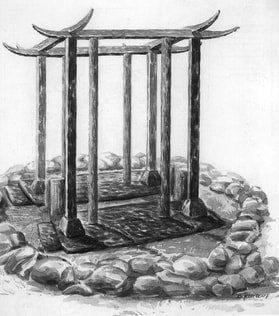Home Turf Project
|
The Home Turf project analyses the long-term development of raised bogs in the Pleistocene 'upland' parts of the Netherlands and adjacent parts of Belgium and Germany, with a main focus on human-land relations. The large majority of Dutch bogs (over 90 %) has already disappeared due to peat-cutting and reclamations, and the remainder is under major threat from climate change, agriculture, desiccation and pollution. Therefore we aim to design proactive strategies for the sustainable management of bog-related cultural remains. |
The interdisciplinary study aims to link data from the humanities and environmental sciences by integrating physical geographical, archaeological and historical geographical data at various spatial scales. Detailed insights are produced into the diverse trajectories that bog landscapes followed through time and how these patterns relate to human activity. With the aid of constructive dialogues between scientists, numerous authorities, land management agencies and private owners we aim to construct mechanisms to integrate the interests of all of these stakeholders. |
|
Physical Geography
Lateral bog expansion significantly alters the physical landscape and understanding the timing, process rates and spatial dynamics of bog expansion is crucial to develop our understanding of earth surface processes in peatland environments and to analyse patterns in human occupation. However, peat inception and lateral expansion have received remarkably little attention, particularly concerning the former extensive bog landscapes of the Northwest European Plain. In this subproject we aim (1) to increase understanding of temperate peatland inception and lateral expansion on the process level, (2) to develop high-resolution palaeogeographical reconstructions for selected study sites, and (3) to relate peatland palaeogeography to cultural patterns from prehistory to modern time. The research is embedded in the overarching Home Turf project and will contribute to proactive strategies for the management of cultural heritage in bog landscapes. |
Archaeology
So far, Dutch peatland archaeology has been undertaken from two perspectives. The first approach focuses on single finds or structures (e.g. wooden trackways) that were discovered in the distant past during peat-cutting. Various spectacular finds are known, which feature prominently in academic and popular literature, but have hardly been contextualised properly yet. The second approach centers on links between lateral bog expansion and regional habitation patterns. These environmentally determistic studies generally do not pay attention to socio-cultural aspects. Both perspectives lack integration and offer only limited insights into human-bog relations. In the archaeological part of the research a novel approach will be developed to bridge the gap between regional and site/object-based information and to lift interprative frameworks to a higher level. This includes studying relations between archaeological and environmental data on different spatial levels. |
Landscape History
Persistent stereotypes decribe bogs as remote, hostile and dangerous places. Yet, they were integral parts of settlement territories and were used by humans in various ways. This paradox is addressed in an interdisciplinary way. Main goals of the landscape historical project are to: (1) Reconstruct how perceptions of bog landscapes of different social groups have developed since the Middle Ages, (2) Reconstruct spatiotemporal patterns of past extensive uses of bog landscapes and their drivers, (3) clarify how the function of bog landscapes as border zones and barriers over the past millennium has shaped their spatial and social history and (4) Develop and test a method for tracing, analysing, and valuing material and immaterial cultural remains in (former) bog landscapes, and contributing to proactive strategies for sensible heritage management. |


